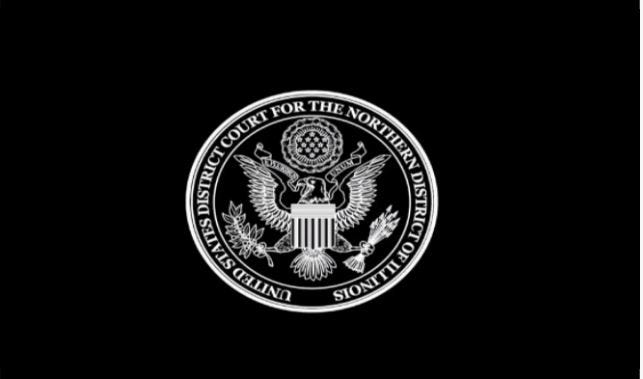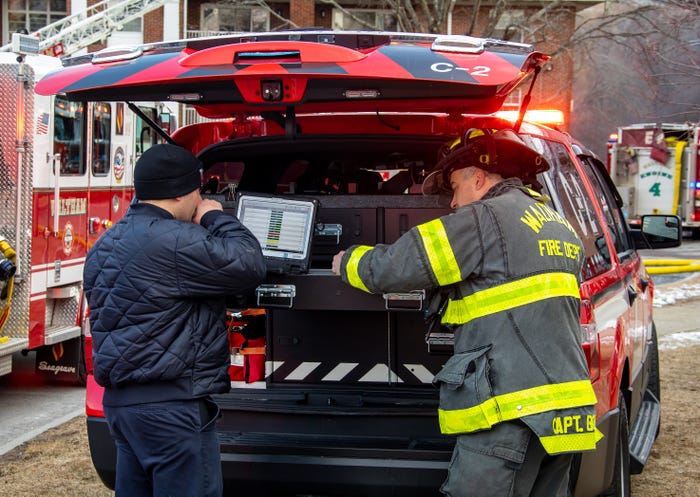Truly a watershed event
In the U.S., radio spectrum regulated by the FCC falls into two broad categories: licensed and non-licensed. Non-licensed spectrum is more popularly referred
February 1, 2007
In the U.S., radio spectrum regulated by the FCC falls into two broad categories: licensed and non-licensed. Non-licensed spectrum is more popularly referred to as unlicensed (though it should be noted that the FCC considers an unlicensed user someone who is illegally operating without a license). Use of unlicensed radios has gone through the roof. Today, virtually all laptop computers and many cell phones come equipped with such radios. More than 100 million unlicensed radios currently are operating in the U.S. alone.
The rapid growth occurred after two important events:
The FCC opened the industrial, scientific and medical (ISM) bands to radio users in 1985.
The Institute of Electrical and Electronics Engineers (IEEE) published the first 802.11 standard in 1997.
Prior to 1985, the FCC set aside three important radio bands — 902 MHz to 928 MHz, 2400 MHz to 2483.5 MHz and 5725 MHz to 5850 MHz — primarily for use by ISM equipment. ISM equipment is not used for radio communications, but radio frequency (RF) emissions are a consequence of ISM equipment operation. Examples of ISM equipment are industrial heaters, RF welders, diathermy machines and microwave ovens.
Until the 1980s, the ISM bands were considered unacceptable for radio communication because of harmful interference created by such equipment. But several companies and industry groups petitioned the FCC and showed that by using spread spectrum modulation, low-power radios could coexist with ISM radiators.
In 1985, the FCC issued new rules for radio communication in the ISM bands in Part 15 of its rules governing RF devices. The new rules authorize radios to operate in the ISM bands without a license at power levels up to 1 W, provided the radios use spread spectrum modulation. If they do not, the radios can still operate in these bands, but power levels must be reduced to about 0.5 mW. In addition to ISM devices and Part 15 radio users, location and monitoring services (e.g., vehicle tracking), amateur radio operators, licensed point-to-point microwave, and U.S. Navy fire-control radars all use the ISM bands.
Almost immediately, companies started offering products and services in the ISM bands using spread spectrum modulation. Some of these products included automatic remote meter readers, cordless telephones, home security and fire alarms, garage door openers, wireless microphones and wireless private branch exchanges (PBXs).
Hundreds of millions of Part 15 radios are in use in the U.S., and the market is growing at a rate that exceeds 20% per year.
The FCC recently relaxed its rules requiring spread spectrum modulation to allow higher data rate services in the unlicensed bands. Rates of 54 Mb/s are now possible at 2.4 GHz and 5 GHz, but vulnerability to interference has increased somewhat.
The commission also is trying to keep up with the demand for unlicensed radio services. In the early 1990s, the FCC allocated unlicensed spectrum in the PCS guard band (1915 MHz to 1930 MHz). In 1997, the FCC opened up 200 MHz of spectrum in the 5 GHz band for a new category of unlicensed equipment called NII/SUPERNet devices (5.15 GHz to 5.35 GHz). More recently, the FCC opened 255 MHz to wireless local area network (WLAN) use in the band from 5.470 GHz to 5.725 GHz. Today, practically the entire 5 GHz band is available for some type of unlicensed use. At the time of this writing, the commission is considering the use of unlicensed devices on unoccupied television channels in the 700 MHz band.
By far, the greatest unlicensed radio activity occurs in the 2.4 GHz and 5 GHz bands. The IEEE has published a series of interoperability standards under its 802.11 series (wireless Ethernet). These standards greatly accelerated the growth of the WLAN market, and today nearly all wireless data products in the 2.4 GHz and 5 GHz bands are 802.11-compliant, although Bluetooth and Zigbee (802.15.4) personal area network devices also are popular users of the 2.4 GHz band.
The 802.11 standard specifies operation in four unlicensed frequency bands: 2.4 GHz to 2.4835 GHz, 5.15 GHz to 5.25 GHz, 5.25 GHz to 5.35 GHz and 5.725 GHz to 5.825 GHz. Both direct sequence spread spectrum and frequency hopped spread spectrum are the modulation methods used in the 2.4 GHz band, but the most popular versions of the standard, 802.11a and 802.11g, do not use spread spectrum modulation in the classic sense. Instead, 802.11a (5 GHz) and 802.11g (2.4 GHz) use orthogonal frequency division multiplexing (OFDM), which produces a maximum data rate of 54 Mb/s. It uses multiple carriers closely spaced, but in a manner to ensure that interference between carriers is minimized.
Each carrier is modulated with one of several digital modulation schemes, including binary phase shift keying, quadrature phase shift keying, 16-point quadrature amplitude modulation (QAM) or 64-point QAM. IEEE 802.11g networks employ 11 channels, each 20 MHz wide. The carrier frequencies of these channels are listed in Table 1 on page 36. Note that only Channels 1, 6 and 11 are non-overlapping.
In the 2.4 GHz to 2.4835 GHz band, the maximum peak output power is limited to 1 W. If the transmit antenna has a directional gain of greater than 6 dBi, the transmitter power must be reduced by the amount in decibels that the antenna gain is greater than 6 dBi. This does not hold for point-to-point systems, however. For point-to-point systems, the peak output power must be reduced by only 1 dB for every 3 dB that the antenna gain exceeds 6 dBi.
The FCC limits the transmit power in the three 5 GHz band segments separately, even though the first two are contiguous. The upper 100 MHz segment is intended for longer-range outdoor systems (e.g., point-to-point microwave), while the lower band is intended for indoor and short-range applications. Table 2 on page 36 lists the FCC power limits in the 5 GHz band for systems with a maximum antenna gain of 6 dBi, while Table 3 indicates the IEEE's channelization plan.
The 802.11 standard uses a method called carrier sense multiple access with collision avoidance to enable multiple users to access a common medium. In this protocol, the station receiver listens to the channel for a period of time to determine whether another station is transmitting. If another station is transmitting on the channel, the station wishing to transmit will wait a random length of time before checking the channel again. If the channel is clear, the station will proceed to transmit.
The station that is transmitting will reserve the channel for a specified period of time, so that the entire frame can be transmitted with minimal risk of a collision. A station will break the data message into frames, with each frame constituting a separate transmit request. The receiving station will issue an acknowledgement to the frame just received. If an acknowledgement is not received, the transmitting station will try to transmit the frame again.
Jay Jacobsmeyer is president of Pericle Communications Co., a consulting engineering firm located in Colorado Springs, Colo. He holds bachelor's and master's degrees in Electrical Engineering from Virginia Tech and Cornell University, respectively, and has more than 25 years experience as a radio frequency engineer.
Table 1IEEE 802.11b and 802.11g channels
Channel 1 | 2412 MHz |
Channel 2 | 2417 MHz |
Channel 3 | 2422 MHz |
Channel 4 | 2427 MHz |
Channel 5 | 2432 MHz |
Channel 6 | 2437 MHz |
Channel 7 | 2442 MHz |
Channel 8 | 2447 MHz |
Channel 9 | 2452 MHz |
Channel 10 | 2457 MHz |
Channel 11 | 2462 MHz |
Table 2Maximum transmitter power for the 5 GHz band
Frequency band (GHz) | Maximum output power (G <6 dBi) |
5.15 — 5.25 | 40 mW (2.5 mW/MHz) |
5.25 — 5.35 | 200 mW (12.5 mW/MHz) |
5.725 — 5.825 | 800 mW (50 mW/MHz) |
Table 3802.11 channel numbers and center frequencies (5 GHz, OFDM modulation assumed)
Band (GHz) | Channel number | Center frequency (MHz) |
|---|---|---|
Lower band 5.15-5.25 | 36 | 5180 |
40 | 5200 | |
44 | 5220 | |
48 | 5240 | |
Middle band 5.25 — 5.35 | 52 | 5260 |
56 | 5280 | |
60 | 5300 | |
64 | 5320 | |
Upper band 5.725-5.825 | 149 | 5745 |
153 | 5765 | |
157 | 5785 |



